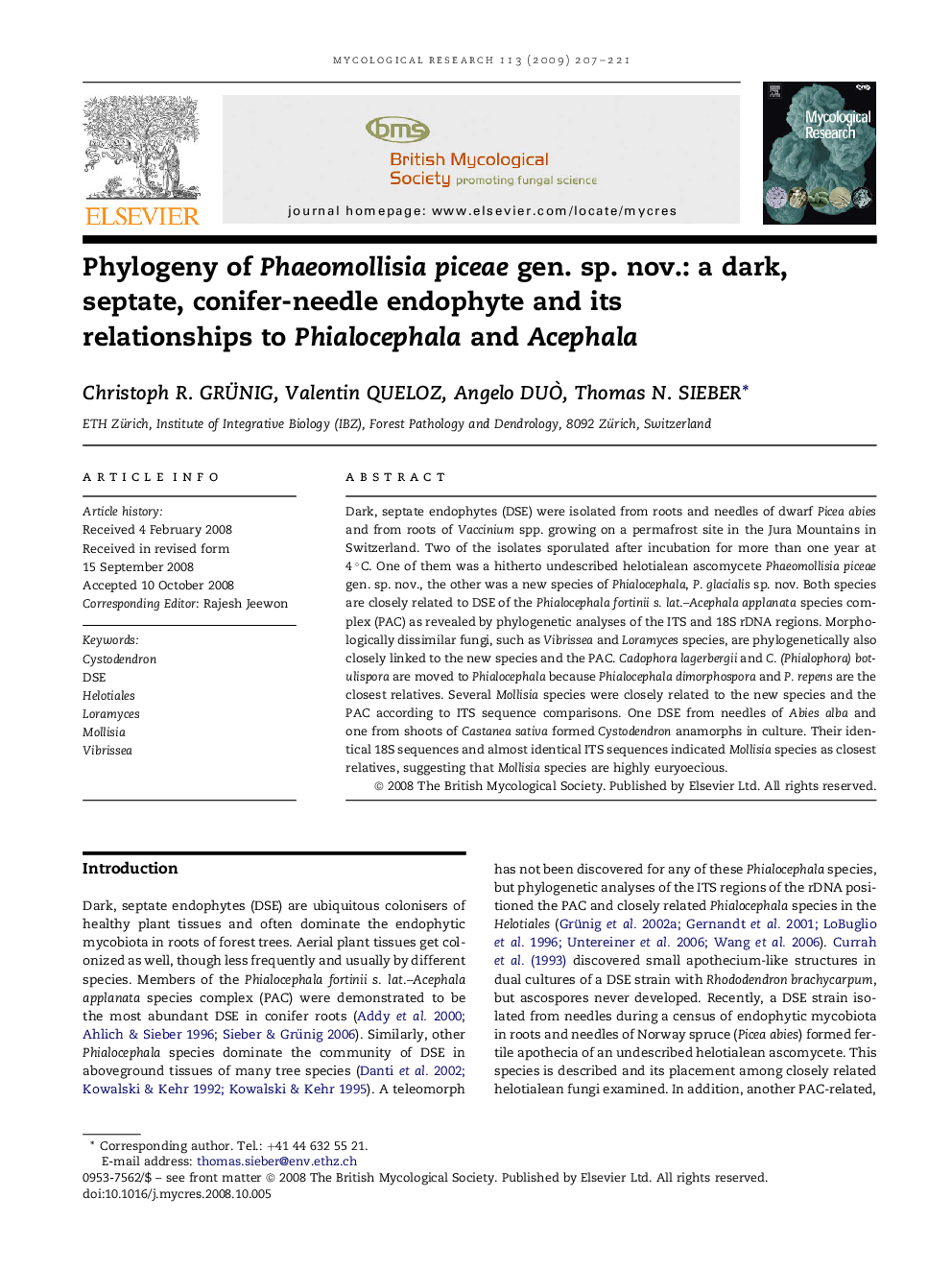| Article ID | Journal | Published Year | Pages | File Type |
|---|---|---|---|---|
| 4357643 | Mycological Research | 2009 | 15 Pages |
Abstract
Dark, septate endophytes (DSE) were isolated from roots and needles of dwarf Picea abies and from roots of Vaccinium spp. growing on a permafrost site in the Jura Mountains in Switzerland. Two of the isolates sporulated after incubation for more than one year at 4 °C. One of them was a hitherto undescribed helotialean ascomycete Phaeomollisia piceae gen. sp. nov., the other was a new species of Phialocephala, P. glacialis sp. nov. Both species are closely related to DSE of the Phialocephala fortinii s. lat.-Acephala applanata species complex (PAC) as revealed by phylogenetic analyses of the ITS and 18S rDNA regions. Morphologically dissimilar fungi, such as Vibrissea and Loramyces species, are phylogenetically also closely linked to the new species and the PAC. Cadophora lagerbergii and C. (Phialophora) botulispora are moved to Phialocephala because Phialocephala dimorphospora and P. repens are the closest relatives. Several Mollisia species were closely related to the new species and the PAC according to ITS sequence comparisons. One DSE from needles of Abies alba and one from shoots of Castanea sativa formed Cystodendron anamorphs in culture. Their identical 18S sequences and almost identical ITS sequences indicated Mollisia species as closest relatives, suggesting that Mollisia species are highly euryoecious.
Keywords
Related Topics
Life Sciences
Agricultural and Biological Sciences
Agricultural and Biological Sciences (General)
Authors
Christoph R. Grünig, Valentin Queloz, Angelo Duò, Thomas N. Sieber,
